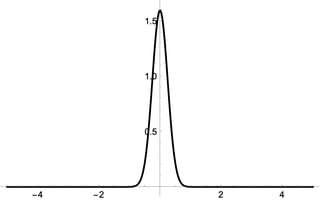Not only do we not "need" negative probabilities in quantum mechanics, but in fact there are no negative probabilities in QM. All probabilities are real numbers between 0 and 1 by definition.
The answer says negative probabilities can account for destructive wave interference and the events cancelling out.
That is incorrect. Probability amplitudes can be negative and can experience destructive wave interfence, but probabilities cannot. Probability amplitudes are not probabilities.
My (possibly incorrect) understanding has always been that we only get negative probabilities in QM in the context of "probability amplitudes", which is just a fancy name for the amplitudes of the wavefunctions.
That is very close to correct; it's correct to a first approximation. 99% of the time that people talk about "negative probabilities" in QM, they really mean complex probability amplitudes. In very advanced applications, they might instead be referring to the Wigner quasiprobability distribution, which is a different notion that is loosely analogous to "negative probabilities" (but only analogous - actual probabilities are still always nonnegative). Until you become much more comfortable with QM, it's probably best to totally forget about the Wigner quasiprobability distribution for now.
But it always seemed kind of weird to talk about probability amplitudes at all -- if we just square the normalized wavefunction and treat that as the PDF, like the Bourne rule says to do, everything is the same as in regular probability, right?
Right (except that it's spelled "Born", not "Bourne").
Why even try to interpret the amplitudes themselves, as opposed to their squares, as probabilities?
We don't interpret them as probabilities. (At least, people who know what they are talking about don't.) They are closely related to probabilities, but they also have fundamental differences.
Am I mistaken in the above paragraph, and we can't always get a regular PDF from squaring the normalized wavefunction and we instead sometimes get quasiprobability distributions that allow negative probabilities?
We always get a regular PDF from squaring the normalized wavefunction. We never get quasiprobability distributions; those come from a very different procedure, which it's probably best to complete ignore until you get much more familiar with QM.
Or, are there situations where we need to consider the wavefunctions themselves, as opposed to first normalzing and squaring them, in order to correctly compute some quantity?
Yes, there definitely are such situations. This is a deep and complicated subject. The fast and loose answer is that it's tremendously convenient to use the phase structure of amplitudes for practical calculations. The somewhat more complete answer is that we need to use the complex amplitudes in order to explain both time evolution and the possibility of changing the measurement basis. The full and deep answer is that the Kochen–Specker theorem and Bell's theorem demonstrate that we can't reproduce the predictions of the standard formalism of QM using only regular PDFs, at least not without making some extremely bizarre assumptions. The complex structure of the amplitudes is fundamentally necessary for reproducing the predictions of QM; it is not just a calculational convenience.
I mean this entirely respectfully, but these theorems are deep and complex, and you probably are not yet familiar enough with QM to fully understand them. But you can take a crack at it. You should pose any follow-up questions specific to these theorems in a separate Physics SE question.
But I don't see why that necesitates this idea of "probability amplitudes" and negative probability -- why can't we just call the wavefunctions wavefunctions and leave the talk of probability entirely to the actual PDF's we get by applying the Bourne rule?
"Negative probability" is just a misnomer. Most people who use that term are either just being sloppy and leaving off the word "amplitude", or they are just confused. "Probability amplitude" is correct terminology, but again, probability amplitudes are NOT probabilities. Their interpretation is very different. If you don't like using two similar terms for very different mathematical concepts, then for now it's fine to just stick to the term "wavefunction" instead (although there are few minor differences between the terms "wavefunction" and "probability amplitude" around the edges).
Or CAN we do that and calling the wavefunction amplitudes probability amplitudes is just one way of thinking about that math?
Correct.
In other words, is this just a question of language, of whether or not try to bring in the label of probability into more of the theory by generalizing the definition of probability, or is there more to it?
I don't quite understand this final question, but yes, it's basically just confusing terminology. Probability amplitudes are related to probabilities, but they are NOT probabilities. They are an intermediate tool that eventually get converted into true probabilities. There are no negative probabilities in QM. It's fine to drop the p-word and just call the components of the wavefunction "amplitudes" if you want - people will still understand what you mean.



